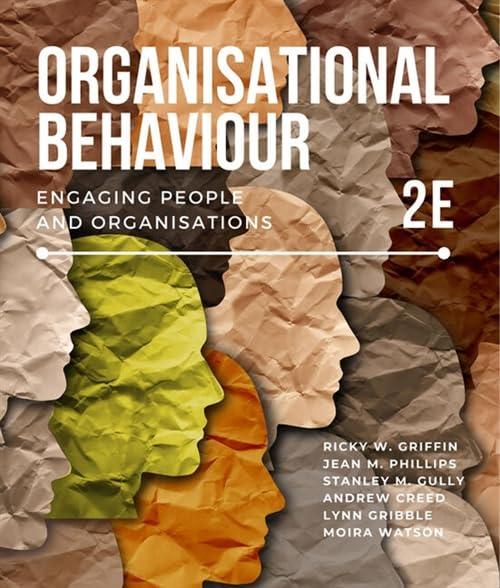Attracting the best talent to your organisation is a matter of balancing the available flexible benefits in
Question:
Attracting the best talent to your organisation is a matter of balancing the available flexible benefits in addition to ensuring salaries are commensurate. The attractiveness of flexible benefits is often linked to the benefits of work–life balance, and the overall sense of wellbeing that can be derived from work conditions that are designed to give staff the chance to alleviate stresses. This became especially evident because of the COVID-19 pandemic. Before the pandemic, all manner of creative benefits had been promoted by large employers like Google (nap pods, sporting equipment, free food); Netflix and LinkedIn (unlimited annual leave); Deloitte (cooking classes) and Macquarie (yoga) to try to attract the brightest and best young professionals to their ranks. Even some small businesses were offering incentives like:
• unlimited paid sick leave
• free boxing lessons
• personal development courses
• birthday leave
• Lego building rooms
• choosing your own hours
• secondment experiences to interstate and international office locations
• sponsored further education including MBAs.
The LinkedIn 2022 Global Talent Trends report identified newer workplace trends emerging from the global pandemic. Such trends include more rapid automation, millennials and Generation Z taking over the workforce, the increased turnover of staff known as the great resignation or reshuffle, and the greater flexibility to work where and when you want. In light of these trends, companies are now using some of the above and developing other benefits for attracting and retaining staff, such as leave flexibility, wellbeing initiatives and gender parity programs.44 With job shopping on the rise and more workers prepared to move on if flexibility and incentives are insufficient, some researchers warn that flexible benefits have to be genuine value-adds rather than ways to gloss over or obscure serious over-work and workload imbalance problems at some organisations. The nature of work is sometimes so complex that it needs to be better studied and broken down so that job assignments are more manageable, better delegated and less stressful for the people doing them. Just offering a mental health day or a yoga class to try to counteract inherently stressful work might be just a band-aid solution. The total design of work in balance with the rewards and benefits the organisation can afford to provide is the real issue to articulate here.
Question
Consider whether your organisation is glossing over an inherently stressful workload. Are tension and stress actually drivers of performance in the workplace, such that initiatives to minimise them might diminish productivity and increase staff turnover?
Step by Step Answer:

Organisational Behaviour Engaging People And Organisations
ISBN: 272389
2nd Edition
Authors: Ricky W. Griffin, Jean M. Phillips, Stanley M. Gully, Andrew Creed, Lynn Gribble, Moira Watson





